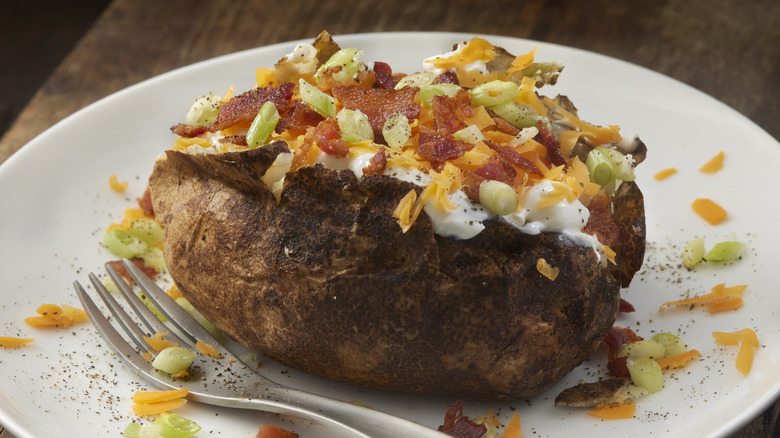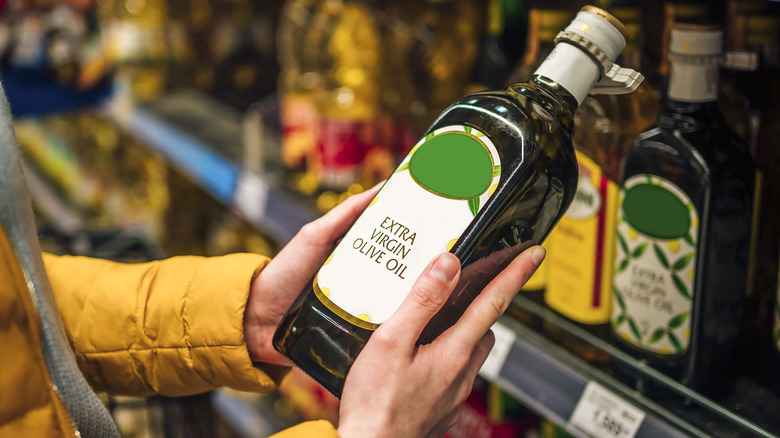You Should Definitely Use A Thermometer When Baking Potatoes
Kitchen thermometers are an essential tool when it comes to food safety, but they can also help home chefs determine doneness. And while an underdone baked potato probably isn't going to imperil your health, it might just ruin your dinner. Fortunately, a thermometer is also a great way to tell whether it's time to remove your spud from the oven. In order to get the most accurate temperature reading, make sure you're inserting the thermometer dead center into the potato, which is typically the most substantial portion.
As for the temperature, you'll want to bake the potato until it reaches a minimum of 210 degrees Fahrenheit. At this point, your best bet is to remove the potato from the oven to avoid it becoming too crispy or dried out. However, be wary of taking it out too soon. You'll know that the potato is not completely cooked if it's still relatively firm when you stick a fork into it.
Does the type of thermometer matter?
There's a surprising variety of kitchen thermometers to choose from, each of which offers their own unique benefits. A traditional meat thermometer can have a digital or analog dial and is meant to remain inserted into food for the duration of the cooking process. Digital versions even sound an alert that tells you when the food is the correct temperature. If this seems a little more sophisticated than you need, you can also use an instant-read thermometer, which you periodically insert into food and remove to check doneness.
Oven temperature is another huge consideration when making a baked potato, and the general rule is that the oven should be set to a range between 375 to 400 degrees Fahrenheit. Keep in mind that not every oven is accurate when it comes to temperature, which is why standalone oven thermometers are so beneficial. Simply place the thermometer in the oven and preheat as you normally would. You can now verify that the temperature inside the appliance is the same on the dial. If it's not, you can adjust the dial accordingly to ensure the right range.
More tips for baking the perfect potato
Along with doneness, the type of potato you choose for baking can have a major impact on the finished dish. In this case, Russet potatoes are a great selection. Russets have a substantial skin, which offers a nice contrast in texture when it comes to the softer interior. These delicious qualities have much to do with the large concentration of starch in Russets, along with their lower water content.
How you treat the exterior of the baked potato can also have a huge impact on its crispiness. Accordingly, there are two key ingredients you really should use: salt and olive oil. Before cooking, give the spuds a rub down with a generous helping of olive oil, then apply salt to the exterior. If you want to add even more texture, use a coarser salt, such as Kosher. With these tips, you can take a humble baked potato and make it into a world-class side dish to accompany any main course.


